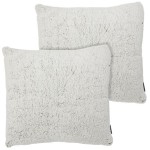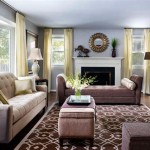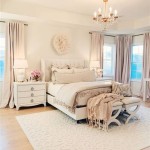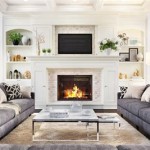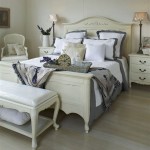Cool Wallpapers for Home Decor: A Comprehensive Guide
Wallpaper, a decorative material used to cover the interior walls of homes and offices, has experienced waves of popularity throughout history. Once considered dated or old-fashioned, wallpaper is experiencing a resurgence in popularity, driven by advancements in printing technology, material innovation, and a renewed appreciation for its ability to transform a space quickly and dramatically. Modern wallpapers offer a diverse array of patterns, textures, and colors, providing homeowners and interior designers with a powerful tool to express personal style and enhance the aesthetic appeal of any room.
The selection of wallpaper for home decor extends far beyond simply choosing a pattern that is visually pleasing. Factors such as room size, lighting conditions, existing furnishings, and the overall desired atmosphere must be carefully considered to achieve a cohesive and harmonious design. The type of wallpaper material also plays a significant role, influencing durability, ease of installation, and overall cost. With a plethora of options available, understanding the nuances of wallpaper selection is crucial for making informed decisions that result in a space that is both beautiful and functional.
This article aims to provide a comprehensive guide to selecting cool wallpapers for home decor. It will explore various types of wallpaper materials, discuss different pattern styles and their impact on room ambiance, and offer practical advice on choosing the right wallpaper for different spaces within the home. The information presented is intended to empower readers to make informed decisions about incorporating wallpaper into their home decor projects.
Understanding Wallpaper Materials
The foundation of any successful wallpaper installation lies in the quality and suitability of the material itself. Different wallpaper materials offer varying degrees of durability, washability, and ease of installation. Choosing the right material is essential for ensuring that the wallpaper both looks good and performs well over time.
Vinyl Wallpaper: Vinyl wallpaper is one of the most popular choices due to its durability and ease of maintenance. It is constructed with a paper backing coated with a layer of vinyl. This construction makes it highly resistant to moisture, stains, and scratches, making it suitable for high-traffic areas like kitchens, bathrooms, and hallways. Vinyl wallpaper is also relatively easy to clean, requiring only a damp cloth to wipe away dirt and spills. There are two main types of vinyl wallpaper: solid vinyl and paper-backed vinyl. Solid vinyl is thicker and more durable, while paper-backed vinyl is generally more affordable. The durability and cleanability of vinyl wallpaper make it a practical choice for families with children or pets.
Non-Woven Wallpaper: Non-woven wallpaper is made from a blend of natural and synthetic fibers, creating a breathable and dimensionally stable material. This type of wallpaper is known for its ease of installation and removal. It doesn't require pre-soaking like traditional paper wallpapers, and it is less likely to tear during installation. Non-woven wallpaper is also considered to be more environmentally friendly than vinyl wallpaper, as it is often made from sustainable materials. Its breathability helps prevent the growth of mold and mildew, making it a suitable choice for bathrooms and kitchens, although it is not as water-resistant as vinyl. The ease of installation and removal makes non-woven wallpaper a popular choice for DIY enthusiasts.
Paper Wallpaper: Paper wallpaper is the traditional type of wallpaper, made from paper pulp. While it can be visually appealing, it is less durable and more difficult to maintain than vinyl or non-woven wallpaper. Paper wallpaper is susceptible to tearing, staining, and moisture damage. It requires careful handling during installation, and it is not recommended for high-traffic areas or rooms with high humidity. However, paper wallpaper can be a more affordable option, and it is available in a wide range of patterns and colors. Additionally, some paper wallpapers are made from recycled materials, making them a more environmentally conscious choice. Due to its fragility, professional installation is often recommended for paper wallpaper.
Fabric Wallpaper: Fabric wallpaper adds a luxurious and textured element to any space. It is made from various fabrics, such as linen, silk, or cotton, adhered to a paper or non-woven backing. Fabric wallpaper is more expensive than other types of wallpaper, but it offers a unique visual and tactile experience. It is best suited for low-traffic areas, such as bedrooms or living rooms, as it is more susceptible to staining and damage. Fabric wallpaper can also help to absorb sound, making it a good choice for creating a more peaceful and intimate atmosphere. Due to its delicate nature and expense, professional installation is highly recommended for fabric wallpaper.
Grasscloth Wallpaper: Grasscloth wallpaper is a natural and eco-friendly option made from woven natural fibers, such as jute, hemp, or seagrass, attached to a paper backing. It offers a unique textured look and adds a touch of organic beauty to any room. Grasscloth wallpaper is relatively durable, but it is not washable and can be difficult to clean. It is best suited for low-traffic areas, such as bedrooms or studies. The natural variations in color and texture add to its unique appeal. Installation of grasscloth wallpaper requires special adhesives and techniques to avoid damaging the delicate fibers, so professional installation is generally recommended.
Exploring Wallpaper Patterns and Styles
The pattern and style of wallpaper significantly influence the overall atmosphere of a room. Different patterns can create different optical illusions, making a room appear larger, smaller, brighter, or more cozy. Choosing the right pattern is crucial for achieving the desired aesthetic and creating a space that feels both comfortable and stylish.
Geometric Patterns: Geometric patterns, such as stripes, chevrons, and polka dots, can add a sense of order and visual interest to a room. Stripes can make a room appear taller or wider, depending on whether they are vertical or horizontal. Chevron patterns add a dynamic and modern touch, while polka dots create a playful and whimsical atmosphere. Geometric patterns work well in contemporary or minimalist spaces, and they can be used to create a focal point in a room. When using geometric patterns, it is important to consider the scale of the pattern in relation to the size of the room. Large-scale geometric patterns can be overwhelming in small spaces, while small-scale patterns may get lost in larger rooms.
Floral Patterns: Floral patterns evoke a sense of romance, elegance, and natural beauty. They are available in a wide range of styles, from delicate and subtle to bold and dramatic. Large-scale floral patterns can make a statement in a living room or bedroom, while smaller-scale floral patterns can add a touch of charm to a bathroom or hallway. Floral patterns can be used to create a vintage-inspired look or a more contemporary and sophisticated aesthetic. When selecting floral wallpaper, consider the color palette and the size of the blooms in relation to the scale of the room. Also, consider the existing furniture and accessories to ensure a cohesive and harmonious design.
Damask Patterns: Damask patterns are classic and elegant, featuring intricate woven designs that create a sense of luxury and sophistication. They are typically characterized by symmetrical patterns with stylized floral or geometric motifs. Damask wallpaper is often used in formal living rooms, dining rooms, or bedrooms to add a touch of grandeur. It pairs well with traditional furniture and ornate accessories. Damask patterns can be found in a variety of colors, from rich and opulent to subtle and understated. When using damask wallpaper, it is important to consider the scale of the pattern and the color palette in relation to the existing decor. A large-scale damask pattern can be overwhelming in a small room, while a lighter color palette can help to create a more airy and spacious feel.
Abstract Patterns: Abstract patterns offer a contemporary and artistic alternative to traditional wallpaper designs. They feature non-representational shapes, lines, and colors that create a sense of movement and visual interest. Abstract wallpaper can be used to add a modern and edgy touch to any room. It works well in minimalist or eclectic spaces, and it can be used to create a focal point or to add a subtle layer of texture to a wall. When selecting abstract wallpaper, consider the color palette and the scale of the pattern in relation to the size of the room. Bold and vibrant colors can add energy and excitement, while more muted tones can create a calming and serene atmosphere. It's important to ensure that the abstract pattern complements the existing furniture and accessories to create a cohesive and balanced design.
Textured Wallpaper: Textured wallpaper adds depth and dimension to a room, creating a tactile and visually engaging surface. It can be made from a variety of materials, such as embossed vinyl, flocking, or natural fibers. Textured wallpaper can be used to mimic the look of other materials, such as brick, stone, or wood, adding a sense of character and authenticity to a space. It can also be used to conceal imperfections in the walls, such as cracks or uneven surfaces. Textured wallpaper works well in a variety of styles, from rustic and industrial to modern and minimalist. When selecting textured wallpaper, consider the color and the scale of the texture in relation to the size of the room. A dark or heavy texture can make a small room feel smaller, while a lighter and more subtle texture can add depth without overwhelming the space.
Choosing the Right Wallpaper for Different Spaces
The selection of wallpaper should be tailored to the specific characteristics and functions of each room. Factors such as room size, lighting conditions, furniture arrangement, and intended use should be carefully considered when making wallpaper selections. What works well in a bedroom might not be suitable for a kitchen, and vice versa.
Living Room: The living room is often the focal point of the home, and wallpaper can be used to create a welcoming and stylish atmosphere. Consider using a bold and patterned wallpaper on a feature wall to create a focal point, or opt for a more subtle and textured wallpaper to add depth and dimension to the room. Large-scale patterns can work well in larger living rooms, while smaller-scale patterns are more suitable for smaller spaces. The color palette should complement the existing furniture and accessories. In a living room with ample natural light, darker colors can be used to create a cozy and intimate atmosphere. In a living room with limited natural light, lighter colors and reflective textures can help to brighten the space.
Bedroom: The bedroom is a sanctuary for relaxation and rest, and wallpaper can be used to create a calming and peaceful atmosphere. Consider using soft and muted colors, such as blues, greens, or grays, to promote relaxation. Floral or damask patterns can add a touch of romance and elegance, while subtle textures can create a sense of warmth and comfort. Avoid using overly bold or stimulating patterns in the bedroom, as they can disrupt sleep. The wallpaper should complement the bedding and other textiles in the room, creating a cohesive and harmonious design.
Kitchen: The kitchen is a high-traffic area that requires durable and easy-to-clean wallpaper. Vinyl wallpaper is an excellent choice for kitchens, as it is resistant to moisture, stains, and scratches. Consider using a patterned wallpaper to add visual interest to the kitchen, or opt for a simple and clean design to create a modern and minimalist look. Lighter colors can help to brighten the space, while darker colors can be used to create a sense of warmth and drama. The wallpaper should complement the cabinetry and countertops, creating a cohesive and functional design.
Bathroom: The bathroom is another area that requires moisture-resistant wallpaper. Vinyl or non-woven wallpaper is the best choice for bathrooms, as they are less likely to be damaged by humidity and condensation. Consider using a light and airy color palette to create a spa-like atmosphere. Small-scale patterns can work well in bathrooms, as they can add visual interest without overwhelming the space. Avoid using fabric or paper wallpaper in bathrooms, as they are susceptible to water damage. The wallpaper should complement the fixtures and accessories, creating a clean and refreshing design.
Hallway: Hallways are often overlooked spaces, but wallpaper can be used to add personality and visual interest. Consider using a bold and patterned wallpaper to create a statement, or opt for a more subtle and textured wallpaper to add depth and dimension. Stripes can be used to make a hallway appear longer or wider. Lighter colors can help to brighten a dark hallway. The wallpaper should complement the surrounding rooms, creating a cohesive flow throughout the home.

Golden Wallpapers For Home Decor Muance Blog

4 Ideas Of Wallpapers For Home Decor Muance Blog

Wallpaper Interior Wall Decor Wallcoverings Best Quality Pictures Zara Wallpapers Gartex

Home Decor With Eco Friendly Wallpapers Mynthings

Wallpaper For Walls Bedroom Home D Decor

20 Inspiring Living Room Wallpaper Ideas Best Decorating

Wallpaper Interior Wall Decor Wallcoverings Best Quality Pictures Zara Wallpapers Gartex

Wallpaper Interior Wall Decor Wallcoverings Best Quality Pictures Zara Wallpapers Gartex

26 Cool Room Wallpapers That Will Upgrade Your Home In 2025

40 Unexpected Wallpaper Design Ideas 2025 Best Home
Related Posts
